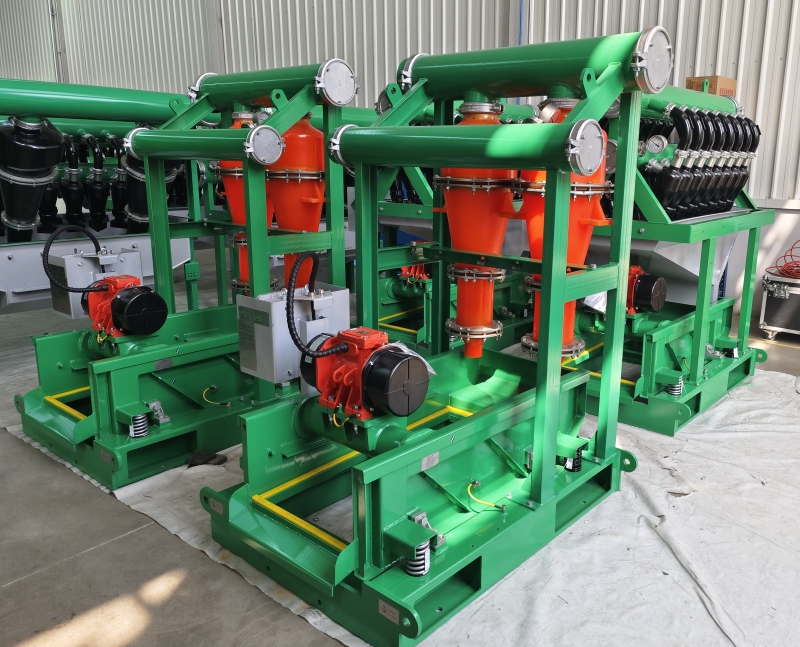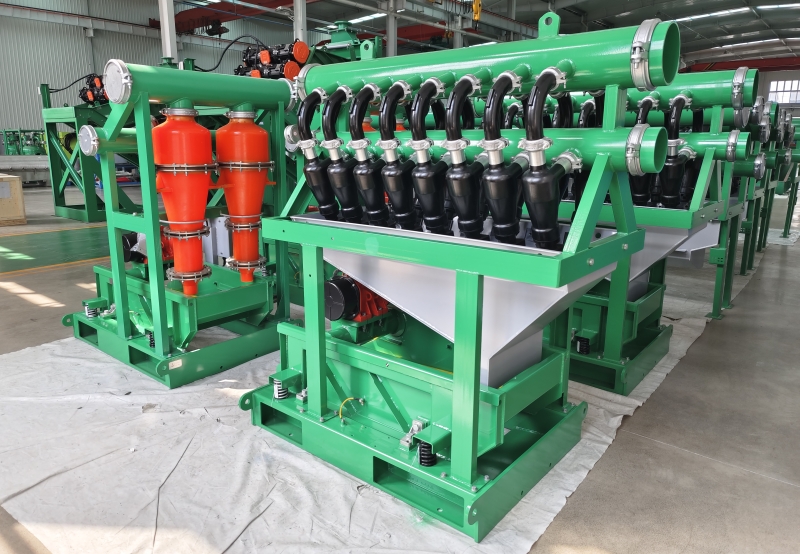

In the oil and gas industry, a desander is a piece of equipment used in the process of separating solid particles, primarily sand, from the hydrocarbon fluids (oil and gas) during production. These solid particles can be damaging to production equipment such as pumps, valves, and pipelines if they are not removed.
Desanders typically work in conjunction with other equipment such as separators, hydrocyclones, and sometimes with screens or filters. The basic principle behind a desander involves using centrifugal force to separate solid particles from the fluid stream.
Here’s a simplified overview of how a desander typically operates:
- Fluid Inlet: The fluid stream containing the solid particles enters the desander.
- Centrifugal Separation: Inside the desander, the fluid is subjected to high centrifugal forces. These forces cause the denser solid particles (such as sand) to move towards the outer wall of the desander, while the lighter hydrocarbon fluids move towards the center.
- Separation and Collection: The separated solid particles accumulate at the outer wall of the desander and are collected and removed from the system periodically. The cleaned fluid exits the desander and continues its journey through the production process.
- Maintenance: Periodically, the desander needs to be cleaned to remove the accumulated solid particles and ensure its proper functioning.
Desanders are typically used in upstream oil and gas production, particularly in wellhead facilities and production separators, where the concentration of solid particles is high. They help in protecting downstream equipment, maintaining production efficiency, and preventing equipment damage and failure.
Overall, desanders play a crucial role in ensuring the smooth operation of oil and gas production facilities by removing solid particles from the produced fluids.
In the oil and gas industry, a desilter is similar to a desander but is specifically designed to remove finer solid particles, such as silt and fine sand, from the hydrocarbon fluids during production. Desilters are often used downstream of desanders or independently, depending on the requirements of the production process.
Here’s how a desilter typically operates:
- Fluid Inlet: Similar to a desander, the fluid stream containing solid particles enters the desilter.
- Hydrocyclone Separation: Inside the desilter, the fluid is directed into hydrocyclones, which are cone-shaped devices. The fluid enters tangentially into the hydrocyclone, creating a swirling motion.
- Centrifugal Separation: As the fluid swirls inside the hydrocyclone, centrifugal forces cause the finer solid particles to move towards the outer wall of the hydrocyclone. Meanwhile, the cleaner fluid moves towards the center and exits the hydrocyclone.
- Separation and Collection: The separated finer solid particles accumulate at the outer wall of the hydrocyclone and are collected and removed from the system periodically. The cleaned fluid exits the desilter and continues its journey through the production process.
- Maintenance: Regular cleaning and maintenance of the desilter are necessary to ensure its proper functioning and to remove the accumulated solid particles.
Desilters are often used in conjunction with desanders and other equipment such as separators to effectively remove solid particles from the produced fluids. They are particularly useful in operations where the fluid stream contains a significant amount of fine solids that need to be removed to protect downstream equipment and maintain production efficiency.
Overall, desilters are essential components in the oil and gas production process, helping to ensure the quality of produced fluids by removing fine solid particles and maintaining the integrity of production equipment.